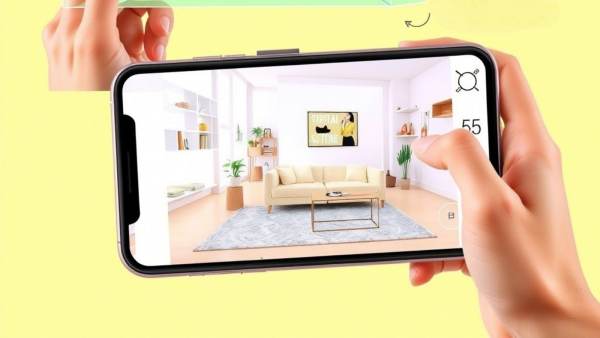

Augmented reality isn’t a gimmick anymore, it’s becoming an everyday reality. As shopping habits evolve in 2025, AR is emerging as a key driver of engagement, blending the digital and physical to reshape how we browse, try, and buy.
What Is AR in retail?
At its core, AR in retail means overlaying digital elements like 3D models, prices, or tutorials, onto the real world using your phone, tablet, or smart glasses. Powered by computer vision and AI, AR recognizes surroundings and objects in real-time, making each experience interactive and tailored. The AR retail market is on track to hit $64.6 billion by 2030, and it’s easy to see why.
Key applications and use cases
Virtual try-ons: Whether it’s lipstick, sneakers, or sunglasses, AR lets customers try products virtually. It boosts confidence and slashes return rates, no fitting room needed.
Home furnishing visualization: Apps like IKEA Place let users see how a sofa or lamp fits into their living room before clicking “buy.”
In-store navigation: Large stores are using AR maps to guide shoppers aisle-by-aisle, saving time and elevating convenience.
Interactive displays and smart mirrors: Digital mirrors in changing rooms recommend outfits, suggest accessories, and even let you try new looks, all hands-free.
AR storefronts and windows: Retailers are turning shop windows into immersive AR stages, drawing foot traffic with engaging visuals and dynamic offers.
Product scanning: Scan an item with your phone and get specs, user reviews, videos, or tutorials instantly, bridging the information gap in physical stores.
Business impact and consumer trends
The numbers tell a compelling story. AR-powered displays boost engagement by up to 11x compared to static ones. Nike saw an 11% jump in conversions using AR try-ons. And retailers using AR report a 25% reduction in returns, crucial in a world where returns cost over $550 billion annually.
Consumer demand is rising fast: 61% prefer stores with AR, and 71% say they’d shop more often if AR was integrated. No wonder, 80% of retailers are investing in AR and VR for better customer experiences.
Challenges and future outlook
Costs, 3D content creation, and system integration remain hurdles. But as tech gets cheaper and tools get smarter, AR is poised to become a staple in every shopper’s journey—whether online or on the high street.
The future of retail isn’t just digital. It’s interactive. And it’s already here.
-
Horror in search for missing woman as police make find on beach 140 miles away

-
Arsenal set to announce three new signings with Mikel Arteta next transfer step crystal clear

-
Chelsea given £45m escape route before PSR deadline as the Premier League prepare investigation

-
COVID-19 cause bombshell as new report sheds fresh light on coronavirus origin

-
Longest-running death row inmate's chilling final words revealed
